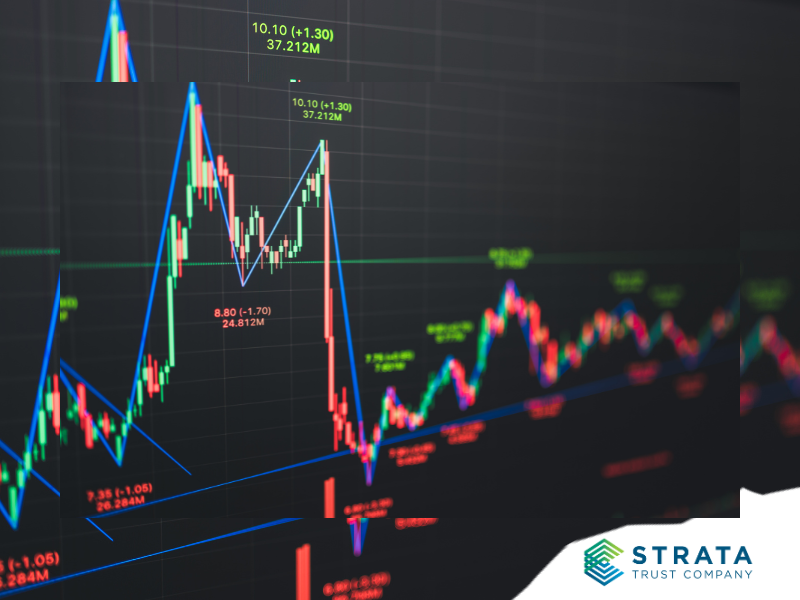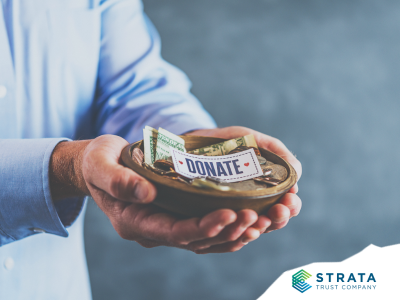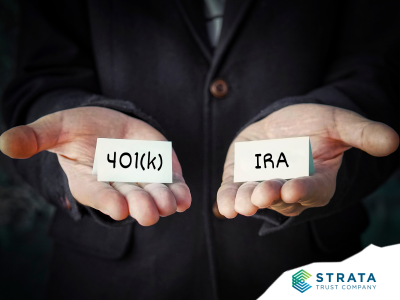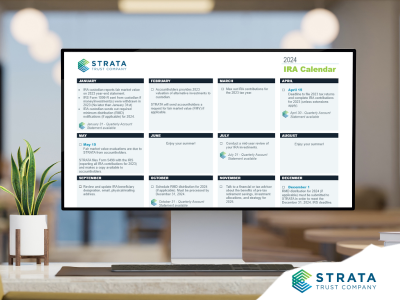As we approach the start of a new year, you may benefit from a few observations about your retirement plans and investments. 2023 has been a unique year to say the least—we all navigated constant market uncertainty, a 42-year inflation high, volatile geopolitical instability, and four interest rate hikes. While we reviewed trending topics for 2023 and put into perspective how they may impact a self-directed IRA (SDIRA) and overall retirement strategies, a few items stood out that you may wish to consider as talking points when collaborating with a financial professional as you look ahead to 2024 and beyond. Staying in tune with the market and working with a financial professional who can understand your particular situation and goals can help retirement savers identify challenges early and prioritize as needed.
 Are You Saving Enough for Retirement?
Are You Saving Enough for Retirement?
Kevin O’Leary, Shark Tank’s “Mr. Wonderful,” believes retirement savers should be putting at least 15% of their salaries in a tax-advantaged retirement account—without making any excuses for not doing this. Agree or disagree, his point should be clear: most of us should be saving more than we are right now, and for a thousand different reasons. But whether you make your retirement contributions to a workplace retirement plan or an SDIRA, you might consider whether you can save more. Sometimes this may require a radical rethinking of what you spend your money on. But sometimes even minor lifestyle adjustments can yield a surprising amount of “extra” money that you can contribute to your retirement savings. STRATA Trust Company (STRATA) offers several financial calculators to help investors personalize the input and print and/or download custom reports. Our calculators include:
- Retirement Planning – Determine monthly income and how long your savings will last.
- IRA Comparison – Compare Traditional and Roth IRAs and anticipated tax savings.
- Investing and Savings – Learn about future value and taxable, tax-deferred, and tax-free investing.
- IRA Withdrawals – Estimate required minimum distributions and penalty-free 72t withdrawals.
Visit our Financial Calculators page to learn more.
 Are There New Roth IRA Options Available?
Are There New Roth IRA Options Available?
We’ve discussed Roth IRA conversions previously — and we’ll undoubtedly talk about them more in the future. You already know that Roth IRAs have a remarkable benefit: potentially tax-free earnings. But this comes with an up-front cost: contributions (or conversions) are taxed on the front end. For those who favor the Roth option, converting pre-tax assets might make sense, especially considering the future tax picture. The Tax Cuts and Jobs Act of 2017 reduced individual tax rates (among other things), but these individual rate reductions are set to expire after 2025. So, if you are inclined to convert at least some of your pre-tax assets to a Roth IRA, it might make sense to do it before marginal tax rates revert to prior levels. The SECURE ACT 2.0 contained numerous Roth provisions that may increase your Roth options:
- Employer contributions may be made as Roth contributions. This optional provision applies to employer-sponsored plans like 401(k), SEP, and SIMPLE plans.
- SIMPLE IRA plan deferrals may be made as Roth deferrals for the first time.
- Roth assets in 401(k), 403(b), and governmental 457(b) plans will no longer be subject to RMDs (just like Roth IRAs).
Although these newer rules may not directly affect your SDIRA (but they may), you may want to consider them if you have a workplace retirement plan. Keep in mind that, while some of these provisions were available in 2023, most plans have not implemented them pending expected IRS guidance.
Additionally, retirement savers thinking about a back-door Roth IRA conversion might want to consider it sooner rather than later. This “tax loophole” for high earners historically has been a target for legislative review. The most recent debate was with The Build Back Better Act, which would have eliminated conversions starting in early 2022. Thankfully, the revised Inflation Reduction Act of 2022 eliminated this language after many financial professionals expressed concerns. The concept is simple: those who cannot contribute directly to a Roth IRA because they exceed the income threshold may make a nondeductible contribution to a Traditional IRA. The IRA owner may then convert Traditional IRA assets to the Roth IRA with no additional tax consequence. This tactic works well only for those who have no pre-tax assets in their Traditional IRAs (or very little). Certain rules make this approach ineffective for some taxpayers, so you should consult with a competent tax professional before moving ahead with this type of conversion.
 Are You Leveraging QCDs?
Are You Leveraging QCDs?
Qualified charitable distributions (QCDs) offer taxpayers who are at least 70½ the option to give money and save money. For those that have reached the age where RMDs apply, QCDs may offer significant tax savings if certain rules are met. QCDs have donation limits ($100,000 for 2023 and $105,000 for 2024) and payments must be made directly to the charity. The receiving organization must meet certain requirements and the QCD is reported on your tax return, thereby reducing your overall “Taxable Amount.”
Using an RMD to make a QCD instead of a charitable contribution allows the taxpayer two major benefits:
- QCDs remove the need to itemize a taxpayer’s deductions.
- Taxpayers can use the standard deduction while also getting “credit” for the charitable deduction.
In short, QCDs may allow taxpayers to claim the generous standard deduction without having to itemize their tax return.
 What Is Your Investment Mix?
What Is Your Investment Mix?
Diversification is a common wealth-building technique because it reduces an investor’s chances of experiencing large losses. Many investors with a STRATA SDIRA understand the philosophy and leverage their STRATA IRA in alternatives that offset this year’s consistent market uncertainty. In STRATA’s 2023 Investor Survey Report, 84% of investors reported that “economic conditions”―including factors such as interest rates, inflation, recession, and the current debt crisis―were top influences on their overall investment strategy. Like other SDIRA investors, they leverage SDIRAs because of their ability to hold a wide array of traditional, nontraditional, and alternative investment options that are unavailable at traditional depository institutions. These investments represent a range of risk and return on investment, but the upside can be considerable. As we head into the new year, you may want to evaluate your investment mix to make sure that it continues to align with your long-term retirement savings objectives. Whether you are investing for substantial growth or include certain financial “hedges” in your mix, STRATA can facilitate your access to these products.
“It’s better to look ahead and prepare than to look back and regret.” ― Jackie Joyner-Kersee.
As we take this time of year to reflect on our family and friends, we hope that our 2023 observations will give you a few ideas to ensure your financial future is on track for 2024 and beyond. On a global scale, there is very little in our control―but on an individual level, it is planning and prioritizing that will give us an advantage over our own financial future. May 2024 be your best year yet!









